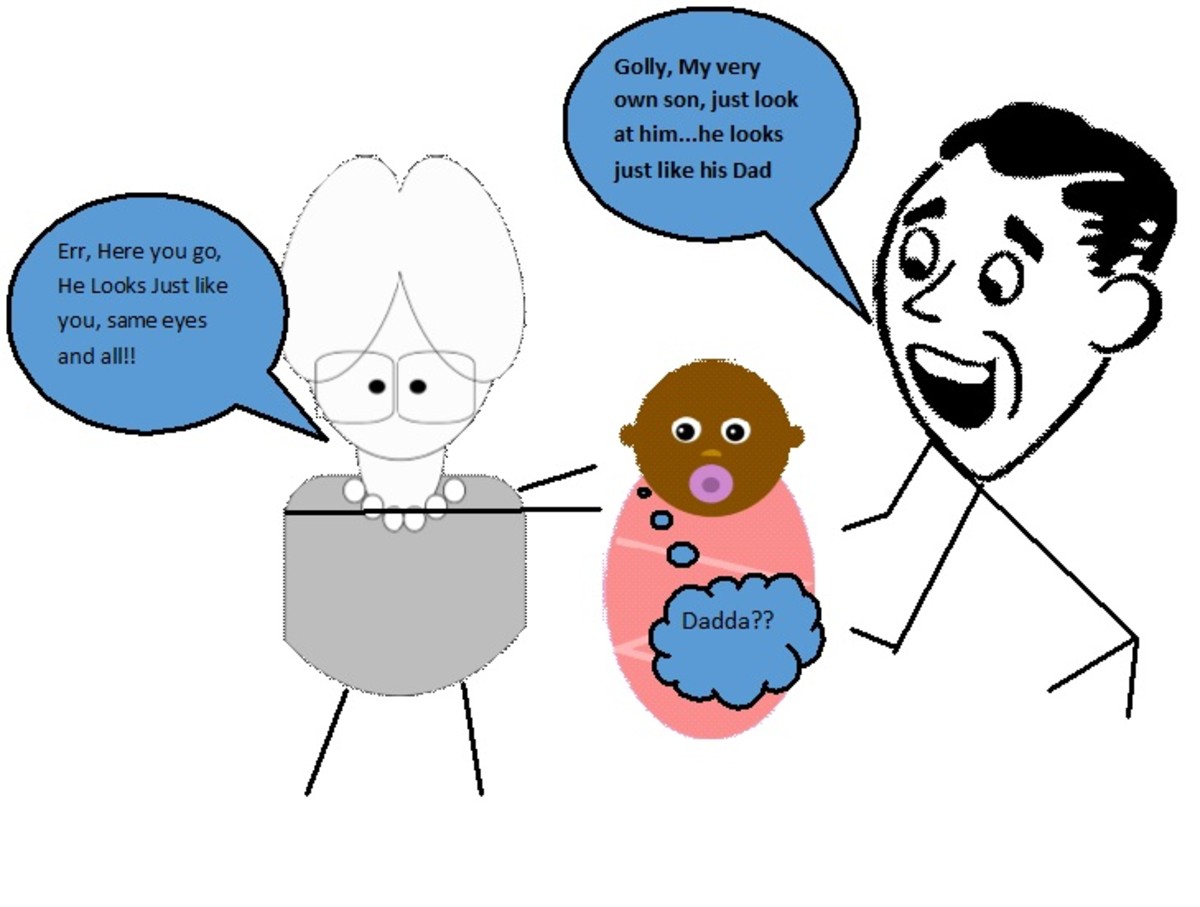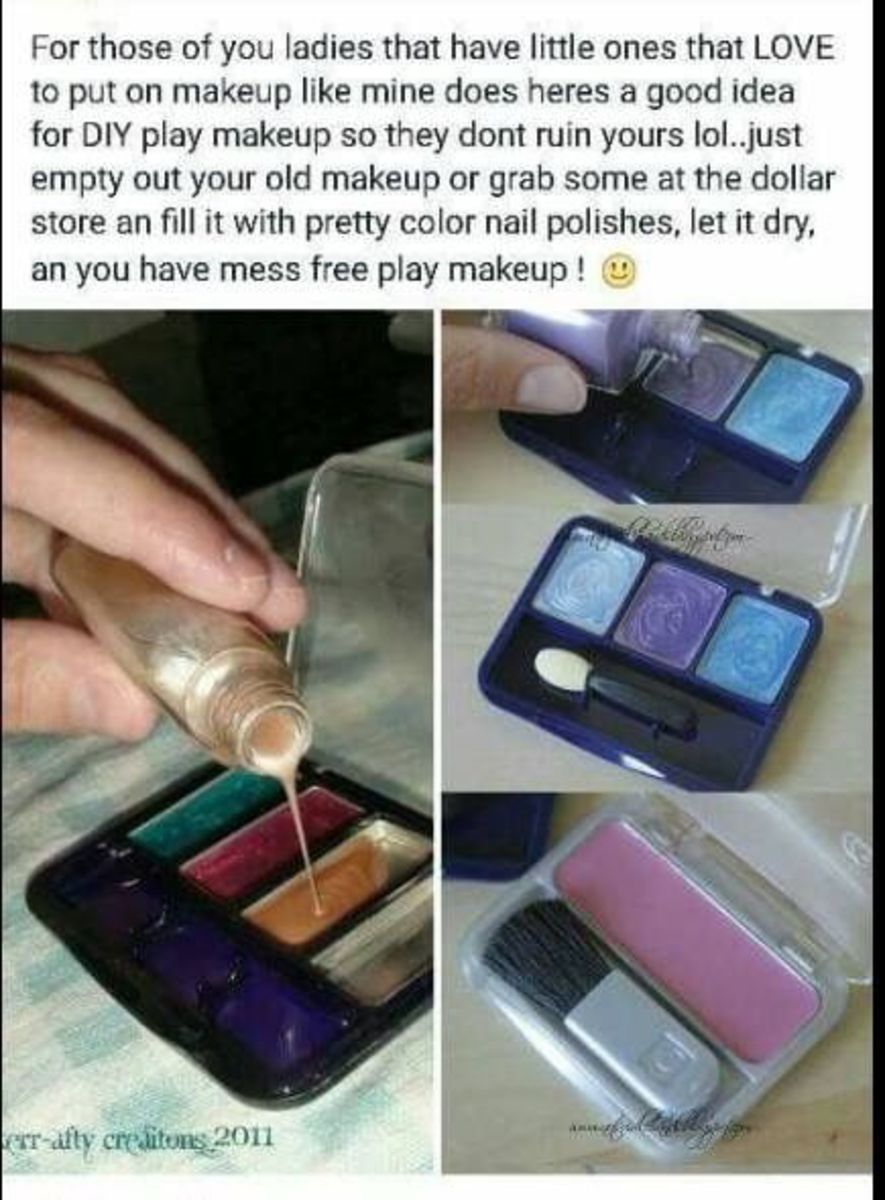Correctly Changing a Baby's Diaper
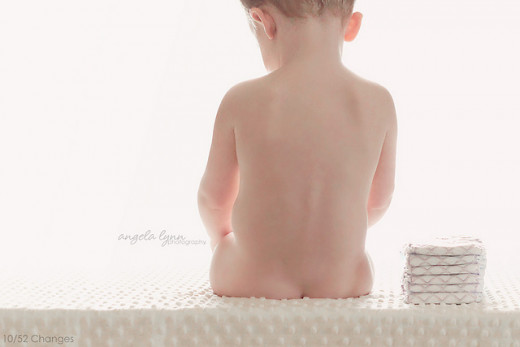
New parents spend a lot of time changing their baby. Newborn babies go through 8-10 diapers a day or more. This will go down to only about 5-6 dirty diapers a day as the baby gets a little older. Check out "How Many Diapers a Baby Uses by Age" online for information on specifics by the age of your baby, along with tons more useful information related to diapering.
Diaper changing might seem complicated at first, especially when you hear about parents being peed on, babies getting diaper rash, leakage and allergies. But with a little practice, you'll find that keeping your baby high and dry is easy. And all of these situations and conditions are actually very rare. Hopefully after this article, you’ll feel much more confident in the process.
Basic Materials Needed
Before you begin, make sure you have the few supplies you need for basic diaper changing:
- a clean diaper
- wet baby wipes
- diaper ointment/cream or petroleum jelly (for preventing and treating rashes)
- a changing pad or blanket for placing your baby
For cloth diapers:
- New cloth diaper (just in case the old one is dirty)
- New diaper liner
- Diaper fasteners (if you’re using them)
- Wet baby wipes
- Dry washcloth
- diaper ointment/cream or petroleum jelly (for preventing and treating rashes)
- a changing pad or blanket for placing your baby
Quick Poll
Do you use cloth or disposable diapers for your baby?
How is a Boy Different?
Boys are different in that they have different private parts (modesty on purpose) and therefore have different needs. This is not more obviously than when you have an infant and you are trying to change diapers. If you have a little boy, then you know what I mean. Especially when you are a mom learning intimately about boy parts in a whole new way, this might be intimidating (not to mention if your little boy has been circumcised).
The first thing you need to know is that germs hide in all of the little wrinkles around his private parts and so need to be cleaned with a little extra attention. Second, little boys like peeing on mom, dad, themselves, and everything else while you’re changing their diaper, so you’ll want to keep their private parts covered during diaper changes (with a wet wipe, washcloth or burp cloth). Exposure to air tends to make little boys pee.
Finally, when putting a new diaper on your baby boy, point their private parts downward in the diaper. This way, when they pee, it will go down into the absorbent part of the diaper rather than out the top of the diaper. I promise, you only do this once before you realize your mistake.
How is a Girl Different?
Handling boy parts may be easy for new dads, seeing as how they have some of their own, but learning about little girl parts in a different way may make some dads super nervous. Babies are a learning experience regardless of their sex, but knowing the smallest details can save parents (and babies) a lot of heartache in the long run.
The key to caring for little girl parts is wiping front to back (towards the buttocks) to prevent infection. They also have little crevices where germs and grime can hide. Where the grime is on the outside for little boys, it is on the inside for little girls. It may be necessary, especially with a poopy diaper, to run a wet wipe down through the skin for a little girl after getting rid of all mess on the outside, just to be safe. On to the diaper changing process!
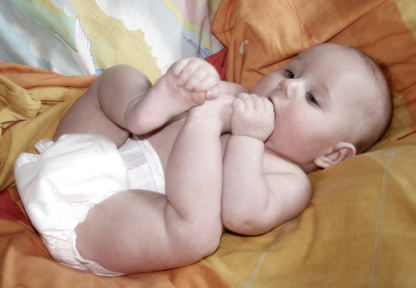
Changing Disposable Diapers
Changing baby diapers is an art. It may sound difficult, and be really gross at first, but after you’ve changed a number of diapers, you get the hang of it and stop being grossed out. Hopefully these steps will make your first few experiences that much easier.
- Wash your hands or wipe them down with baby wipes thoroughly.
- Make sure diaper area is clean and safe for baby.
- Have all materials needed close (within arm’s reach) and available.
- Lay baby down gently on changing pad or designated area.
- Pull baby’s clothes up and away from diaper area to keep them clean.
- Open up new diaper and (lifting baby gently by both ankles) lay under old diaper.
- Open up used diaper and fold down sticky flaps to keep them from sticking to everything else.
- If it’s a pee diaper, open it up and fold it closed underneath your baby, clean side up.
- If it’s a poop diaper, use the diaper to wipe most of the mess off of the baby and then fold it closed underneath, clean side up. Make sure to keep baby elevated above the diaper until he or she is wiped clean to keep from getting poop everywhere.
- Using a wet wipe, clean private parts first, folding the wet wipe after each wipe to make sure the baby is always being wiped with a clean wipe.
- Make sure to get in all of the nooks and crannies that mess can hide, wipe bottom (so you can set the baby down), and clean in the leg creases until the mess is cleaned up.
- Tuck dirty wipes inside the diaper, fold it together and secure it closed with the sticky tabs on each side.
- Drop the dirty diaper into the diaper pail.
- Fold the new, clean diaper up over the baby’s private parts (See How is a Boy/Girl Different above) and up over the belly button (as long as the baby’s belly button has completely healed).
- Secure closed and snug on each side with the sticky tabs. You want the diaper to be snug and well-fitted, but not tight. Make sure no skin is being pinched.
- If the baby’s belly button is still healing, fold the front of the diaper down so it doesn’t irritate the healing area.
- Roll the baby over and check waist and both leg holes to make sure that the diaper is fit correctly and there are no areas for mess to leak out.
- Finish dressing the baby.
- Wipe both your hands and the baby’s down with baby wipes before leaving the diaper pad. (Babies hands tend to be magnetized to their private parts when you open or remove a diaper. Even if you didn’t see it happen, it’s likely that it did. You don’t want them putting that into their mouths.)
- Pick up your baby and enjoy!
TIP: One hand should be kept on the baby at all times while diapering. A baby should never be left alone (not even for a second) while on the diaper pad. Too many parents have experienced serious infant injuries from a baby rolling or falling off the table.
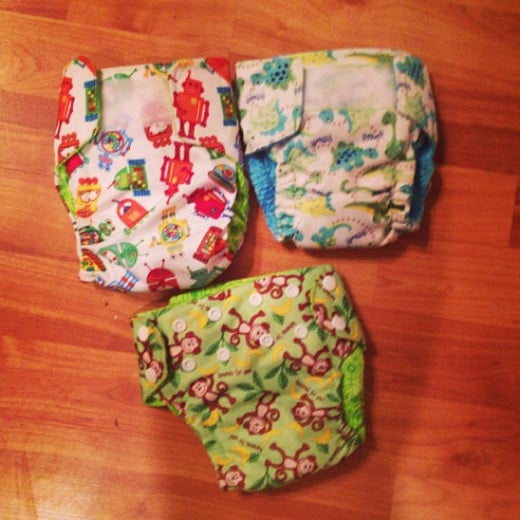
Changing Cloth Diapers
Especially with all of the different types of cloth diapers available to parents today, there really is no right way to change a cloth diaper. Ultimately, you’ll find your own way to do it best. Changing a cloth diaper really isn’t too much different than changing a disposable diaper, as many of the steps are exactly the same.
- You still want to wash your hands and ensure that your baby has a safe changing area.
- You still want to have clean materials to re-diaper baby with. One big difference is that, depending on the type of cloth diaper you are using, you may not be changing the cover, only the liner inside. However, it would be handy to have a clean cover nearby just in case the other one gets dirty.
- You still want to clean the pee or poop in the same way, except you’ll want to set the used liner aside for cleaning (if you are not using disposable liners, which may simply be thrown away).
- Replace the liner (and maybe even the cover) with a clean one, and diaper the baby like above,
- You still want to check that the diaper is snug all over, not allowing for any places for leakage, but not too tight on the baby.
- You also want to also clean both your hands and the baby’s after the diaper change.
- Finally, the last big difference, if you are using cloth diapers/liners, will be needing to clean it before dropping it into the laundry, a diaper pail, or wherever.
- So set your baby down somewhere safe after re-dressing so you can handle the cleaning baby-free.
- Parents using cloth diapers usually have a system set up for cleaning them over the toilet, complete with a diaper sprayer (similar to a kitchen sink sprayer that attaches to the toilet).
- Take the diaper/liner to the toilet and dump as much of the poop in the toilet as possible as you don’t want a great deal of poop in the washing machine.
- Poop from formula-fed babies isn’t water soluble and therefore won’t do well in the washing machine. Poop from breastfeeding babies is, but it’s still gross to put in the washing machine.
- Drop the cleaned-off cloth into your dirty diaper receptacle, and
- You’re all done! (BabyCenter)
Ultimately, the way you change a baby diaper really depends on the baby. For the first few changes, follow the step-by-step guide for success every time. But eventually you will become a Diaper Changing Master and will find the way that works best for you and your little one.
Be confident, do your best, and the skill will come. Once you get it down, you'll never forget it!
Quick Poll
Was this article helpful?
© 2013 Victoria Van Ness

